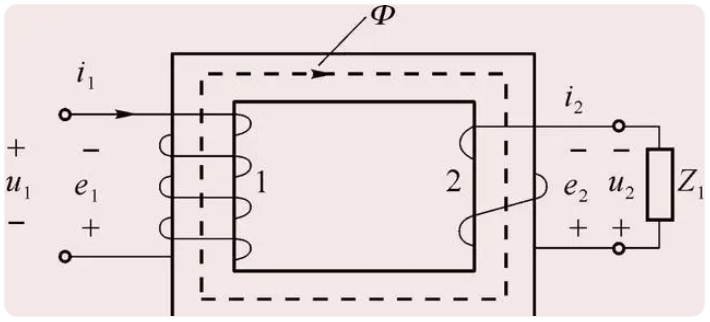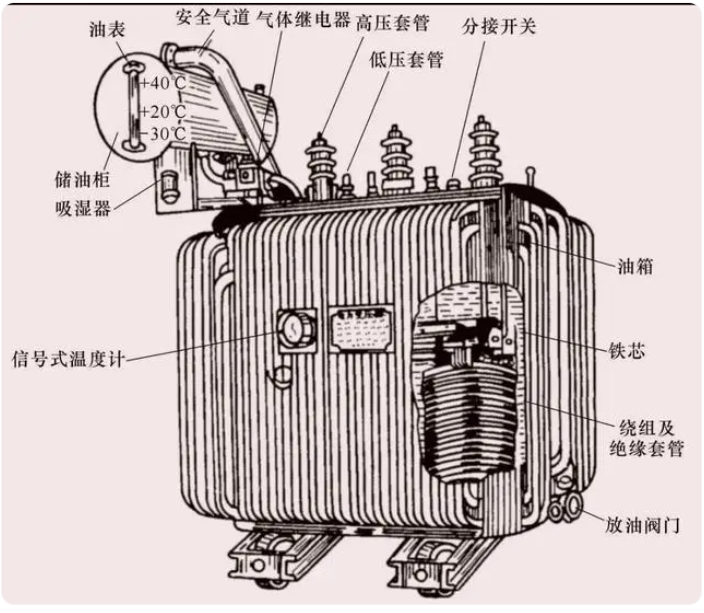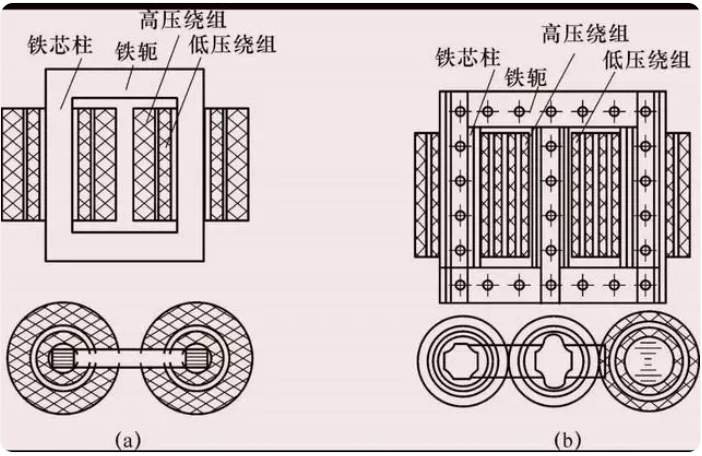An In-Depth Interpretation Of The Transformer: Once Again Explore Its Mysteries
Modern production and life are inseparable from electricity, and power transmission and obtaining various levels of voltage are inseparable from transformers. A transformer is a static electrical appliance that can convert AC power of one voltage level into AC power of another voltage level of the same frequency through electromagnetic induction between coils.
Transformers can be divided according to their uses: power transformers for power transmission and distribution, including step-up and step-down transformers, etc.; special transformers for special power supplies, including welding transformers, rectifier transformers, electric furnace transformers, and intermediate frequency transformers. etc.; instrument transformers for measurement, including current transformers, voltage transformers, autotransformers (voltage regulators), etc.; small power transformers for automatic control systems; impedance transformers for communication systems, etc.
1.1.1 Basic working principle and structure of transformer
Transformers work based on the principle of electromagnetic induction. Figure 1.1 is a schematic diagram of its working principle. The main components of a transformer are an iron core and two windings wrapped around the iron core. The two windings have different numbers of turns and are insulated from each other. There is only magnetic coupling but no electrical connection between the two windings. Among them, the winding connected to the power supply side is called the primary winding or primary winding; the winding used to connect the load is called the secondary winding or secondary winding.

Figure 1.1 Schematic diagram of transformer working principle
If winding 1 is connected to the AC power supply, AC current i1 will flow through the winding, and an alternating magnetic flux Φ with the same frequency as the applied voltage u1 will be generated in the iron core and linked with the primary and secondary windings at the same time. According to the current The principle of magnetic induction induces electromotive forces e1 and e2 of the same frequency in the two windings.

In the formula, N1 is the number of turns of the original winding; N2 is the number of turns of the secondary winding.
If the load is connected to winding 2, under the action of electromotive force e2, electric energy can be output to the load, that is, current i2 will flow through the load, realizing the transmission of electric energy.
It can be seen from equations (1.1) and (1.2) that the induced electromotive force of the primary and secondary windings is proportional to the number of turns of the respective windings, and the induced electromotive force of the windings is approximate to their respective voltages. Therefore, as long as the turns ratio of the windings is changed, The purpose of changing the voltage can be achieved. This is the transformer principle of the transformer. Right now

1.1.2 Basic structure of transformer
The main components of the transformer include core, winding, oil tank, cooling device, insulating bushing and protection device. Figure 1.2 is a schematic structural diagram of an oil-immersed power transformer.

Figure 1.2 Oil-immersed power transformer
The transformer oil plays the role of heat dissipation and protection of the transformer body; the transformer oil acts as an insulator for the core and windings, which are the components of the transformer that transmit energy through electromagnetic induction, and are called the transformer body. The oil tank is used to hold oil, and it also serves as mechanical support and cooling. The bushing is used to insulate the transformer leads from the oil tank; the protection device is used to protect the transformer.
(1) Iron core The iron core is the main magnetic circuit of the transformer and its mechanical skeleton. The iron core consists of two parts: an iron core post and an iron yoke. The iron core post is covered with windings, and the iron yoke is used to close the entire magnetic circuit. Laminated iron cores are divided into core type and shell type according to their structural forms. Core-type transformers have a simple structure and are easier to assemble and insulate the windings. Domestic power transformer cores mainly adopt core-type structures.
(2) Windings There are two types of windings: concentric type and overlapping type. The power transformers produced in my country basically have only one structural type, that is, core transformer, so the windings all adopt a concentric structure, as shown in Figure 1.3.

Figure 1.3 Assembly diagram of core transformer winding and core (a) single-phase; (b) three-phase
The so-called co-core winding means that on any cross-section of the iron core column, the windings are wrapped around the outside of the iron core column with the same cylindrical wire. Generally, the low-voltage winding is always placed inside near the core, and the high-voltage winding is placed outside. There must be a certain insulation gap and heat dissipation channel (oil channel) between the high-voltage winding and the low-voltage winding, and between the low-voltage winding and the iron core column, and they must be separated by insulating cardboard tubes. The size of the insulation distance depends on the voltage level of the winding and the clearance required for the heat dissipation channel. When the low-voltage winding is placed inside close to the iron core column, the required insulation distance between it and the iron core column is relatively small, so the size of the winding can be reduced, and the overall size of the entire transformer is also reduced.
(3) Oil tank and cooling device The body of the oil-immersed transformer is immersed in an oil tank filled with transformer oil. Transformer oil is both an insulating medium and a cooling medium. Through convection after heating, it brings the heat of the iron core and windings to the box wall and cooling device, and then dissipates it into the surrounding air.
(4) Insulating bushing The transformer bushing is an insulating device that leads the high and low voltage leads of the coil to the outside of the box. It insulates the leads from the ground (shell) and also serves to fix the leads. Most of the casing is installed on the tank cover, with a conductive rod in the middle. The lower end of the casing extends into the oil tank and is connected to the winding lead. The upper part of the casing is exposed outside the box and connected to the external circuit.
(5) Protection device oil conservator (also known as oil pillow) The oil conservator is an oil protection device, installed on the transformer oil tank cover, and connected to the oil tank with a curved union pipe. The function of the oil conservator is to ensure that the transformer oil tank is filled with oil, reducing the contact area between oil and air, thereby reducing the rate of moisture and aging of the transformer oil. Moisture absorber (also called respirator) through which the atmosphere communicates with the inside of the oil pillow. When the oil level of the transformer oil changes due to thermal expansion and contraction, gas will enter and exit through the moisture absorber. The moisture absorber is equipped with silica gel or activated alumina to absorb moisture from the air entering the oil pillow. Safety airway (also called explosion-proof cylinder) The safety airway is installed on the top of the fuel tank. It is a long steel cylinder. The upper port is equipped with a glass plate or phenolic cardboard of a certain thickness, and the lower port is connected to the fuel tank. Its function is to allow the oil and gas flow to break through the glass plate or phenolic cardboard and be released when the pressure inside the transformer increases suddenly due to a fault, thereby preventing the box wall from bursting. Oil purifier (also known as thermosiphon oil purifier) The oil purifier uses the natural circulation of oil to filter the oil through the adsorbent to improve the performance of the transformer oil during operation. Gas relay (also known as gas relay) The gas relay is installed between the connecting pipe of the oil pillow and the oil tank. When a fault occurs inside the transformer (such as insulation breakdown, inter-turn short circuit, iron core accident, etc.), gas is generated, or the oil tank leaks oil. When the oil level is lowered, the gas relay operates and sends out a signal so that the operator can deal with it in time; if the accident is serious, the circuit breaker can trip automatically to protect the transformer.
(6) When the tap changer transformer is running under load, the secondary terminal voltage changes with the load size and power factor. If the voltage changes too much, it will have an adverse impact on the user. In order to ensure that the change of the secondary terminal voltage is within the allowable range, a tap is usually set on the high-voltage side of the transformer, and a tap-changer is installed to adjust the number of working turns of the high-voltage winding, thereby regulating the secondary terminal voltage. The reason why the tap is set on the high-voltage side is because the high-voltage winding is placed on the outermost side, making it easier to lead out the tap. Furthermore, the current on the high-voltage side is relatively small, and the cross-sectional area of the conductor of the tap lead and the current-carrying part of the tap switch is also small. Small, switch contacts are also easy to manufacture. Small and medium-sized power transformers generally have three taps, recorded as UN ±5%. Large power transformers use five or more taps, for example, UN ±2×2.5% or UN±8×1.5%, etc. There are two forms of tap changers: one can only be adjusted when the power is off, which is called an off-load tap changer; the other can be adjusted with a load, which is called an on-load tap changer. switch.






